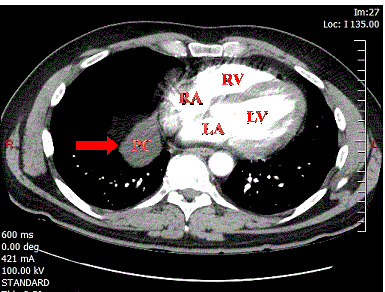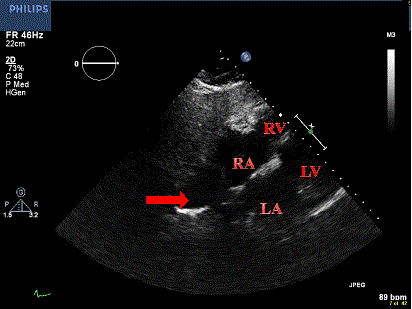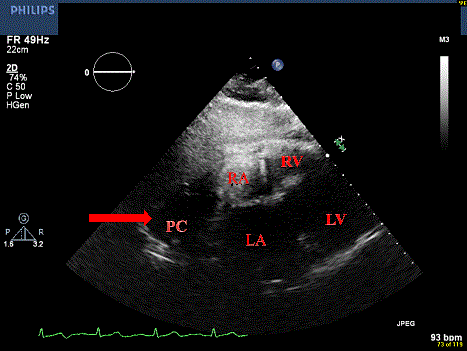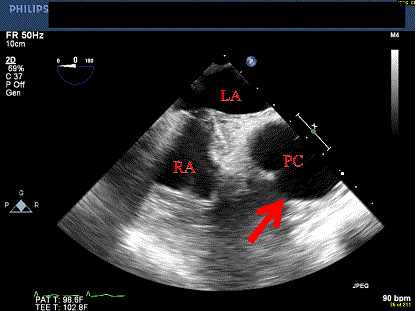Make the best use of Scientific Research and information from our 700+ peer reviewed, Open Access Journals that operates with the help of 50,000+ Editorial Board Members and esteemed reviewers and 1000+ Scientific associations in Medical, Clinical, Pharmaceutical, Engineering, Technology and Management Fields.
Meet Inspiring Speakers and Experts at our 3000+ Global Conferenceseries Events with over 600+ Conferences, 1200+ Symposiums and 1200+ Workshops on Medical, Pharma, Engineering, Science, Technology and Business
Case Report Open Access
Diagnosis of Pericardial Cyst Using Multiple Cardiac Imaging Modalities
| Julia Zheng1, Patrick O’Beirne2, Edward Wrobleski2, Kenneth Khaw2, John Saia2, Gerald Ukrainski2, Chad Bousanti2, LJ Wehnerb2 and Jingsheng Zheng2* | |
| 1Department of Neuroscience, University of Pittsburgh, USA | |
| 2AtlantiCare Medical Center, Pomona, New Jersey, USA | |
| Corresponding Author : | Jingsheng Zheng Medical Director Non-invasive Cardiovascular Imaging AtlantiCare Regional Medical Center Pomona, New Jersey 08205, USA Tel: 609-561-8500 Fax: 609-567-0432 E-mail: jszheng@comcast.net |
| Received: October 02, 2015 Accepted: October 23, 2015 Published: October 26, 2015 | |
| Citation: Zheng J, O’Beirne P, Wrobleski E, Khaw K, Saia J, et al. (2015) Diagnosis of Pericardial Cyst Using Multiple Cardiac Imaging Modalities. OMICS J Radiol 4:208. doi:10.4172/2167-7964.1000208 | |
| Copyright: © 2015 Zheng J, et al. This is an open-access article distributed under the terms of the Creative Commons Attribution License, which permits unrestricted use, distribution, and reproduction in any medium, provided the original author and source are credited. | |
Visit for more related articles at Journal of Radiology
Abstract
Pericardial cysts are rare mediastinal abnormalities. We report on a 54-year-old male, who was found to have a large right-sided pericardial cyst incidentally. Multiple imaging modalities including 2D echocardiography, contrast echocardiogram with DEFINITY, transesophageal echocardiography and CT scan were used to delineate the features of the pericardial cyst. Patient was asymptomatic and was managed conservatively.
|
Abstract
Pericardial cysts are rare mediastinal abnormalities. We report on a 54-year-old male, who was found to have a large right-sided pericardial cyst incidentally. Multiple imaging modalities including 2D echocardiography, contrast echocardiogram with DEFINITY, transesophageal echocardiography and CT scan were used to delineate the features of the pericardial cyst. Patient was asymptomatic and was managed conservatively.
Keywords
Pericardial cyst; Echocardiography; Transesophageal echocardiography; Contrast echocardiography
Introduction
Pericardial cysts are a rare benign anomaly in the mediastinum. They are often found in either cardiophrenic angle. It is postulated that pericardial cysts are derived from failed fusion of one of the mesenchymal lacunae normally forming the pericardial sac [1]. Incidence of pericardial cysts is estimated to be 1:100,000 [2]. Pericardial cysts consist of about 7% of all mediastinal masses [2,3].
Most commonly, they have no associated symptoms and are discovered incidentally during a routine chest X-ray or echocardiography. Episodes of chest pain, shortness of breath, cough or persistent arrhythmia have been described. Other complications, such as congestive heart failure, right ventricular outflow tract obstruction, infection and pulmonary stenosis have been reported. CT scan, MRI and transesophageal echocardiography are the common imaging modalities of choice for diagnosis and follow up. Case Presentation
This is a 54-year-old white male with past medical history of hypertension, who was admitted to a local hospital with chief complaint of diarrhea, vomiting and epigastric pain. He denies chest pain or shortness of breath. He has “fullness” feeling at the epigastric area for several years. In the emergency room, patient underwent CTA of the chest to rule out pulmonary embolism.
CTA of the chest revealed a thin-walled, sharply defined and oval homogenous right mediastinal mass, measuring 5.9 × 4.0 cm2, suggestive of a pericardial cyst (Figure 1). Patient was discharged from the emergency room and was referred to us due to the pericardial cyst. Patient was asymptomatic. Routine transthoracic echocardiogram (2D echo) revealed a 4.1 × 4.4 cm2 cystic structure (red arrow) adjacent to the right atrium, consistent with possible pericardial cyst (Figure 2). DEFINITY is a perflutren lipid microsphere and is injected intravenously to opacify cardiac chambers and to improve the delineation of the endocardial border. Figure 3 shows DEFINITY opacifies the right atrium and the right ventricle. However, the pericardial cyst, which is adjacent to the right atrium, does not fill with the contrast agent. This study suggests that there is no communication between pericardial cyst and the heart. To further delineate the structure of the pericardial cyst, a transesophageal echocardiogram (TEE) was performed. TEE revealed a large pericardial cyst adjacent to the right atrium which had no direct communication with the pericardial space (Figure 4). Since the patient was asymptomatic from a cardiac point of view, he was offered conservative management. Discussion
Pericardial cysts are a rare congenital abnormality that occurs in the middle mediastinum. Pericardial cysts range from 1 to 5 cm in size [4]. They are rarely found in children and are more commonly found in the third or fourth decade of the life [3]. They usually have no communication with the pericardial space. They are unilocular, have smooth walls with an outer layer of endothelial or mesothelial cells. They are usually asymptomatic are often discovered incidentally on chest X-ray. Echocardiography can further delineate the cardiac structures as it can differentiate other possible cardiac abnormalities, such as left ventricular aneurysm, aortic aneurysm, prominent fat pad or a loculated pericardial effusion. 2D echo with contrast agent and TEE may provide incremental value in the diagnosis of pericardial cyst. In this case report, we used multiple imaging modalities, including 2D echo, TEE and CT scan to characterize the pericardial cyst. To the best of our knowledge, this is the first report, using contrast agent (DEFINITY) to further characterize a pericardial cyst.
The management of pericardial cysts depends on the appearance of the cysts and symptoms of the patient. Asymptomatic patients can be managed conservatively with close follow up. Some pericardial cysts may resolve spontaneously, the probable mechanism being the rupture of the cyst. For patients with pericardial cysts who develop symptoms, percutaneous aspiration or surgical excision with either a thoracotomy or video-assisted thoracoscopic surgery should be considered [5-7]. |
References
- Elamin WF, Hannan K (2008) Pericardial cyst: an unusual causes of pneumonia. Cases Journal 1: 26.
- Hynes JK, Tajik AJ, Osborn MJ, Orszulak TA, Seward JB (1983) Two-dimensional echocardiographic diagnosis of pericardial cyst. Mayo Clin Proc 58: 60-63.
- Jabr FL, Skeik N (2010) Pericardial cyst. Intern Med 49: 805-806.
- Frisoli T, Grosu H, Paul S, Eden E (2011) Recurrent rupture of a pericardial cyst presenting as syncope, pleuropericarditis, and pneumonitis. Chest 140: 90A.
- Najib MQ, Chaliki HP, Raizada A, Ganji JL, Panse PM, et al. (2011) Symptomatic pericardial cyst: a case series. Euro J Echo 12: E43.
- Butz T, Faber L, Langer C, Wiemer M, Horstkotte D, et al. (2007) Echocardiography-guided percutaneous aspiration of a large pericardial cyst. Circulation 116: e505-e507.
- Patel J, Park C, Michaels J, Rosen S, Kort S (2004) Pericardial cyst: case reports and a literature review. Echocardiography 21: 269-272.
Figures at a glance
 |
 |
 |
 |
| Figure 1 | Figure 2 | Figure 3 | Figure 4 |
Post your comment
Relevant Topics
- Abdominal Radiology
- AI in Radiology
- Breast Imaging
- Cardiovascular Radiology
- Chest Radiology
- Clinical Radiology
- CT Imaging
- Diagnostic Radiology
- Emergency Radiology
- Fluoroscopy Radiology
- General Radiology
- Genitourinary Radiology
- Interventional Radiology Techniques
- Mammography
- Minimal Invasive surgery
- Musculoskeletal Radiology
- Neuroradiology
- Neuroradiology Advances
- Oral and Maxillofacial Radiology
- Radiography
- Radiology Imaging
- Surgical Radiology
- Tele Radiology
- Therapeutic Radiology
Recommended Journals
Article Tools
Article Usage
- Total views: 16204
- [From(publication date):
October-2015 - Mar 29, 2025] - Breakdown by view type
- HTML page views : 11602
- PDF downloads : 4602
